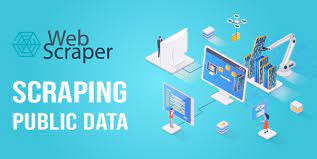Cleaning and preprocessing scraped data is an essential step in data analysis and preparation. It involves transforming raw, unstructured, or messy data obtained from web scraping into a structured and usable format. This process typically includes steps such as data validation, removal of duplicates and irrelevant information, handling missing values, and standardizing data formats. Here are some guidelines for cleaning and preprocessing scraped data:
- Data Validation:
- Removing Duplicates:
- Handling Missing Values:
- Identify missing values in the scraped data.
- Decide on an appropriate strategy for handling missing values, such as imputation (replacing missing values with estimated ones) or deletion.
- Be cautious when imputing missing values, as it can introduce bias or inaccuracies.
- Standardizing Data Formats:
- Removing Irrelevant Information:
- Remove any irrelevant or redundant information that is not useful for your analysis.
- This may include removing HTML tags, special characters, or noisy text.
- Consider using regular expressions or specific parsing techniques to extract only the relevant data.
- Normalizing and Encoding Data:
- Normalize numerical data to a common scale if required (e.g., scaling values between 0 and 1).
- Encode categorical variables using one-hot encoding or other appropriate encoding techniques.
- Normalization and encoding help in standardizing data and making it suitable for machine learning algorithms.
- Data Storage and Management:
- Decide on an appropriate storage format for your cleaned and preprocessed data, such as CSV, Excel, or a database.
- Consider using a database management system (DBMS) to efficiently store and retrieve large datasets.
- Ensure proper documentation and organization of the data to facilitate easy access and future analysis.
Remember that the specific cleaning and preprocessing steps may vary depending on the nature of your scraped data and the analysis goals. It’s important to understand the characteristics of your data and tailor the cleaning process accordingly.
SHARE
